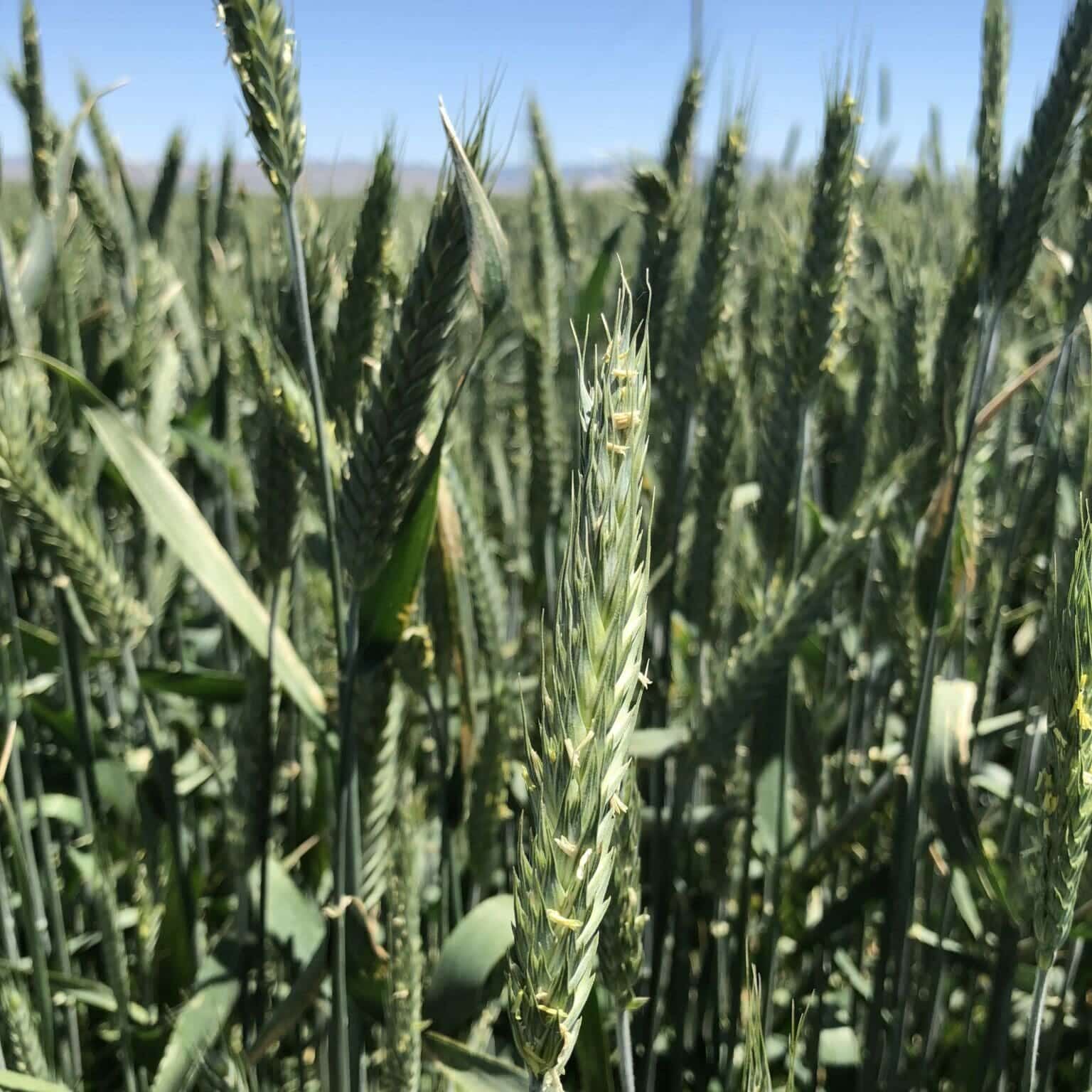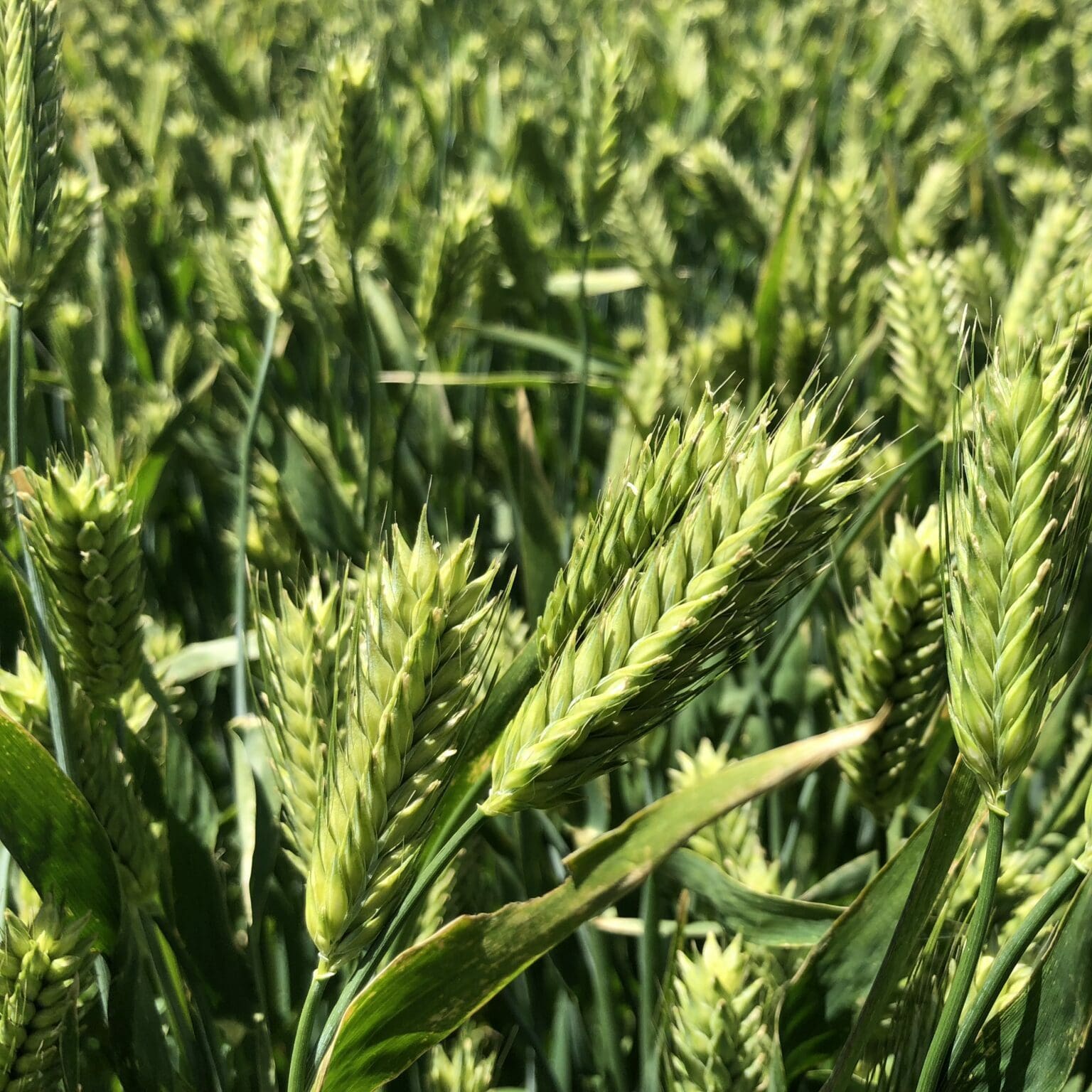Willow Creek Winter Wheat
- Scientific name: Triticum aestivum
- Hard red wheat forage variety
- Late maturing
- Extremely winter hardy
- Beardless/Awnless
- Highly palatable
This product is not available online. Please give us a call at 435.283.1411 to order.
Willow Creek Winter Wheat (Triticum aestivum) is an improved hard red forage variety with many desirable forage features. It grows tall, matures later than other winter wheats, and expresses a fine stemmed morphology. Willow Creek produces abundant forage under dryland and irrigated conditions. It has good winter hardiness, is beardless, and is highly palatable to cattle. Willow Creek is frequently fall planted to provide a nutritious pasture source the following spring. This also allows for delayed turnout onto native or slower growing perennial pastures.
Willow Creek Winter Wheat is extremely winter hardy. If planted early in the fall it can provide fall grazing, early spring grazing, and one or more high-tonnage summer cuttings. Under irrigation, regrowth can provide multiple cuttings or additional pasture. Compared to haybet barley, Willow Creek produces higher tonnage and a wider flag leaf. Forage quality is somewhat lower than for forage barleys but beneficially, nitrates are also significantly lower.
Ray Hard Red Winter Wheat is a new improved variety developed by crossing Yellowstone and Willow Creek Wheat. Ray is far superior in seed and grain production and is equal in forage production to Willow Creek.
Released by the Montana Agricultural Experiment Station in 2005.
***Click on the “Quick Plant Facts” tab above for more information.
USDA National Agricultural Statistics
USDA National Agricultural Statistics
Montana 2021 Wheat Varieities PDF
Prepared By: Montana Wheat & Barley, USDA National Agricultural Statistics Servicem, Montana Field Office, Helena, MT
Beards, Dwarf Beards and Awnlettes
Making Sense of Grain Beards
What is the difference between “bearded” and “dwarf beard” and “beardless” varieties? How do I choose the one best for me?
The table below will help you visualize the different characteristics of each variety, if they have beards (or not) and why it matters. See our BEARDED GRAINS blog post for additional information.
| Species | Variety | Planting Season | Beard Expression | Comments |
|---|---|---|---|---|
| Oat | Otana | Spring | Beardless | Oats do not have a beard |
| Oat | Monida | Spring | Beardless | Oats do not have a beard |
| Oat | Intimidator | Spring | Beardless | Oats do not have a beard |
| Oat | Monico | Spring | Beardless | Oats do not have a beard |
| Oat | Magnum | Spring | Beardless | Oats do not have a beard |
| Oat | Everleaf™ Falcon Oat | Spring | Beardless | Oats do not have a beard |
| Oat | Everleaf™ 126 Oat | Spring | Beardless | Oats do not have a beard |
| Barley | Vaquero | Spring | Beardless | May express a beard up to 4/10,000 plants (.04%) |
| Barley | Sunstar Double | Spring | Bearded | Bearded forage barley |
| Barley | Claymore | Spring | Bearded | Bearded forage barley |
| Barley | Haymaker | Spring | Beardless | Forage barley |
| Barley | Lavina | Spring | Beardless | Forage barley |
| Barley | Goldeneye | Spring | Bearded | Grain barley |
| Barley | Sunstar Pride | Fall | Bearded | Fall forage barley |
| Barley | Valor | Fall | Beardless | Fall forage barley |
| Barley | Baldwin | Fall | Awnletted | Beard expression if planted after October 15 |
| Triticale | Merlin Max™ | Facultative | Beardless | Forage triticale |
| Triticale | Gunner™ | Facultative | Beardless | Forage triticale |
| Triticale | 131 | Fall | Beardless | Forage triticale |
| Triticale | 141 | Spring | Awnletted | 141 was used facultatively at high elevations |
| Triticale | Luoma | Fall | Awnletted | Forage triticale |
| Triticale | Flex 719™ | Facultative | Awnletted | Forage triticale |
| Triticale | FX 1001 | Fall | Nearly Beardless | FX 1001 may have up to 3% beard expression |
| Triticale | Motley™ | Facultative | Nearly Beardless | Forage triticale |
| Wheat | Jefferson | Spring | Bearded | Hard red grain wheat for milling |
| Wheat | Twin | Spring | Beardless | Soft white forage wheat |
| Wheat | Brundage | Fall | Beardless | Soft white forage wheat |
| Wheat | Ray | Fall | Beardless | Hard Red forage or milling wheat |
| Wheat | Willow Creek | Fall | Beardless | Hard Red forage or milling wheat |
| Rye | Rymin or VNS | Facultative | Bearded | Cereal forage rye |
| Peas | Austrian Winter Peas | Facultative | Beardless | Peas do not have a beard |
| Grain Mixture | Fall Forage Blend | Fall | Beardless | May contain awnletted varieties |
| Grain Mixture | Prosper 3 Grain Forage Mixture | Spring | Beardless | Forage mixture |
| Grain Mixture | Prosper Plus with Peas | Spring | Beardless | Prosper with forage peas added |
Helpful Links
Additional information about this product can be found on the academic websites linked below.
Synonyms
Many plants have more than one common and scientific name. We've listed a few of them below.
- Willow Creek Winter Wheat
- Triticum aestivum var. willow creek
- Winter Wheat
Who is Great Basin Seed?
Great Basin Seed is a seed company that specializes in seed sales and consultation for home, ranch, farm, range and reclamation. We have been a leader in the seed industry since 1974.
Our History
We've been in the seed business since 1974.
What We Offer
We offer seed for home, farm, ranch, range and reclamation projects.
Meet the Gang
We have the best employees in the world! We are proud of the work they do, and trust them to serve you!
Right: Company founder Lloyd and his wife Paula Stevens in a wildflower seed production field circa 1977
Quick Plant Facts
| Common Name: | Winter Wheat |
|---|---|
| Elevation of Occurance: | |
| Lifespan: | |
| Origin: | |
| Scientific Name: | |
| Plant Height: | |
| Plant Type: | |
| Min. Precipitation: | |
| Growth Season: | |
| Seeds per Pound: | |
| Max Sowing Depth: | |
| Planting Rate: | |
| Best Time to Sow: | |
| Sun & Shade Tolerance: | Full Sun |
| Root Form: |





